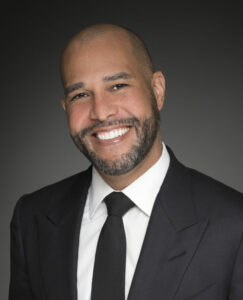The Los Angeles County Board of Supervisors voted unanimously to return Bruce’s Beach to the heirs of its original owners, Willa and Charles Bruce, about 100 years after the now $20 million property was stripped from the family by the City of Manhattan Beach.
The County will enter a 24-month lease agreement with the Bruce family and pay $413,000 in annual rent, according to approved county transfer documents. Also included in the lease agreement is the family’s right to require the county to acquire the beach property — and the county’s right to purchase the property from the Bruce family — within a certain timeframe. The purchase price cannot exceed $20 million.
Purchased in 1912 by the Bruce family, the Manhattan Beach property was one of the few beaches in Los Angeles that was accommodating to Black residents. As it grew in popularity, the Bruce family and beach guests were racially harassed by white neighbors and the Ku Klux Klan. The city moved to seize the property via eminent domain in 1924 and around five years later, successfully took the property from the family, eventually leading to the demolition of its beachside resort.It remained vacant for decades prior to it being transferred to the state, and then to Los Angeles County in 1995.
Community activist Kavon Ward was a significant driver in bringing attention to Bruce’s Beach. Not long after the murder of George Floyd, Ward began an advocacy campaign for the property and its original owners.
The vote to return the beach to the Bruce family is restitution, according to George C. Fatheree III, a partner at Sidley Austin, which represented the family pro-bono.

“I don’t think we can call this justice. We’ll never be able to measure what the Bruces lost (because) we’ve got no idea how their business would have grown, the success that they would have had, that their family would have had,” Fatheree said. “And it’s not just their family. It’s the people that worked (there), the people who visited and were inspired to be business owners and entrepreneurs. The loss is immeasurable.”
Fatheree wrote in a follow-up email that Sidley Austin is evaluating similar cases. “We want to work with other law firms and public interest groups to share what we’ve learned about the reparations process to have a magnified impact,” he wrote.
Fatheree began working with the Bruce family in the spring of last year. He said there was no playbook or precedent to go by and he planned for contingencies and potential lawsuits.
A lawsuit was later made against the County of Los Angeles to prevent it from transferring the property back to the Bruce family, but the judge decided in the county’s favor.
Fatheree said that the saga of Bruce’s Beach sets a precedent for reparations as they pertain to real estate.
“I think the Bruce’s Beach case is a model, but it’s just one model, and what we need is a variety of models, the same way that there were a variety of strategies that were used to dispossess black people of real property,” Fatheree said. “We need a variety of strategies moving forward, to help make amends for that.”
Fatheree has received several phone calls and emails from people around the country informing him about property injustices that are similar to the case of Bruce’s Beach.
Sidley Austin is in the process of opening escrow to have the property officially transferred to the Bruce family.

